Shortly before Christmas, Gerda Müller (Vice Rector for Organisational Development, Gender & Diversity), Sabine Reiter (Acting Director of mica – music Austria), and Mirjam Unger (filmmaker & freelance author) met at the mdw for a discussion; the topics they covered included the presence of women in the cultural sphere, the importance of role models, and the steps needed in order to realise equal rights for men and women.
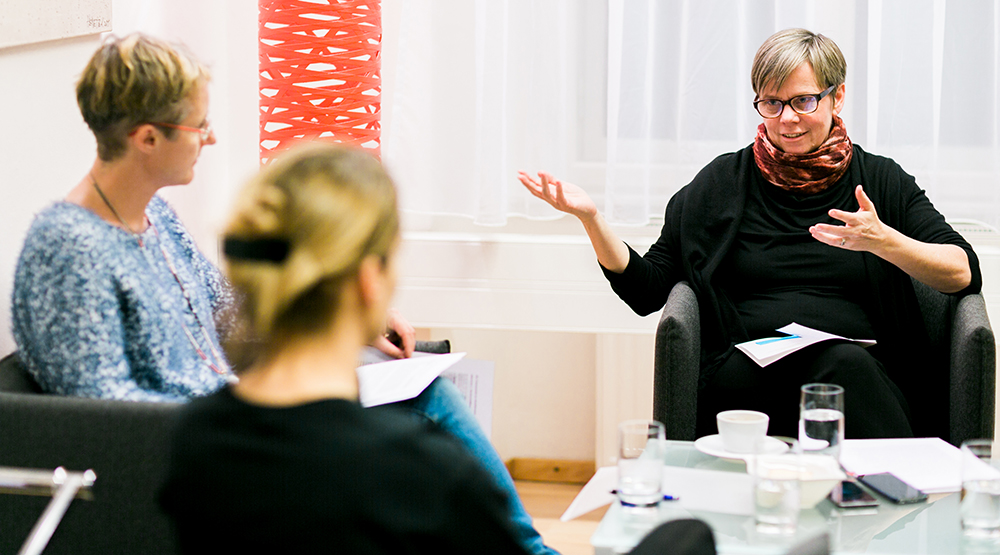
In recent years, the share of women has risen in almost every field, and the number of young women studying at the university level has been increasing steadily. Has this had an impact on women’s success in the arts and culture?
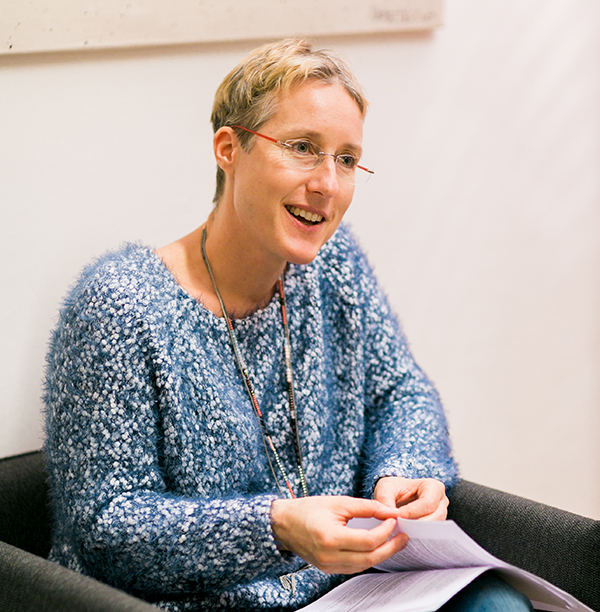
Sabine Reiter (SR): One area where it has had an impact, I’m happy to say, is contemporary music. The percentage of composers who are women is growing larger and larger. In ensembles and orchestras, the situation is changing for some instruments, while others are still played almost exclusively by men—brass instruments, for example. In popular music, we still see the classic roles: drums and guitar are a male domain, while women more often sing. As for positions of leadership: at smaller venues, as well as at small festivals and events, you see lots of women—but at the large festivals, events, and venues, it’s mainly men. In that respect, we’ve seen too little progress.
So wherever prestige and money are in play, it’s still male-dominated. Ms. Müller, how does this look at universities?
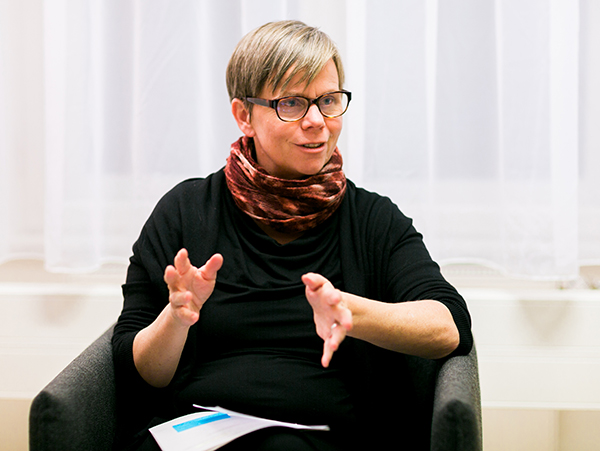
Gerda Müller (GM): Here at the mdw, we have a rectorate team made up of three women and two men. So something is happening—at the top level. Among the university’s other employees, the situation looks a bit different. The share of women among our mid-level instructors has reached the 50%-mark, but only 28% of our professors are women.
Do you notice any gender conventions in students’ selection of their majors?
GM: In violin and in music education, the share of women is high. Which is also the case in voice for popular music and voice in general.
According to an analysis done by the SR-Archiv für Popularmusik, the share of women in pop music is a mere 10%. Why is that?
GM: We did a gender screening of the popular music field at the mdw, and the women musicians there confirmed to us that it’s a tough job. They told us that it’s stressful for them to have to race from one gig to the next, jet all over the world, and play in constantly different combinations of people.
SR: It probably also has to do with the image of women in pop—which isn’t exactly the most emancipated one. And there are also still too few women who are changing that by reaching the top of the pop music food chain. Women also form bands less often. And when they do, it’s more often bands with a soloist and accompanying musicians. The classic band formation consisting of four-to-five people is a men’s thing—which certainly also has to do with the fact that boys form bands while they’re still at school.
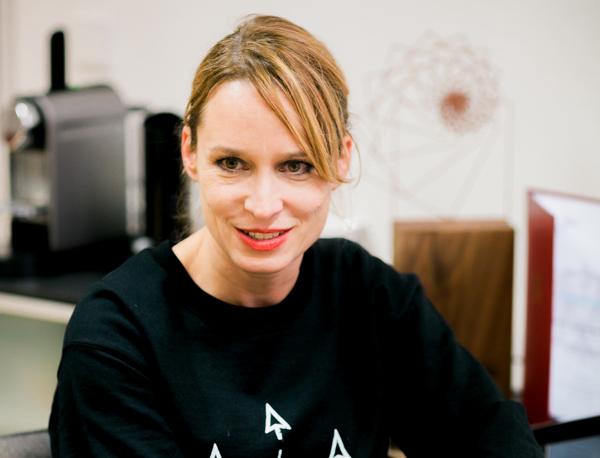
Ms. Unger, in your documentary Oh Yeah, She Performs, you feature the four Austrian musicians Eva Jantschitsch (a.k.a. Gustav), Clara Luzia, Teresa Rotschopf, and Vera Kropf (of Louise Pop). What’s your take on things?
Mirjam Unger (MU): For a long time, the rehearsal studio was a very male place. So in this light, it’s certainly also a question of too few role models. What successful female role models can we find in Austrian pop music history prior to the turn of the millennium? Only a few occur to me spontaneously: Marianne Mendt, Jazz Gitti, Stephanie Werger. But in the younger generation, there’s a whole lot happening. Young women are forming pop, hip hop, and feminist electro collectives.
GM: Isn’t it also a matter of getting noticed? Perhaps it’s the case that women musicians are less visible.
MU: One does notice a lot happening at the Popfest, on FM4, and on YouTube. And I often think of Oh Yeah, She performs!—which I finished back in 2012—and ask myself: How would I do that today? Who would I feature, nowadays? We’re seeing more and more strong women join the musical fray.
So things aren’t entirely hopeless?
MU: There’s so much stuff going on, but the gender discussion itself is stagnating. It elicits unbelievable aggression. It’s incredible how heated things can get.
GM: It’s a topic that has some very negative connotations attached to it. That starts even among our students. Again and again, I’m surprised when I hear young women objecting to the idea of quotas. Their argument runs like this: we’ve already got equality, so we don’t need them.
MU: I have the feeling that they’re assuming a male line of argumentation, here.
“Quotas just set differences in stone,” is another typical argument against quotas.
MU: Ever since they introduced quotas in television and in film, women have been getting called more often for jobs.
GM: I also take a very practical view, here: I think that quotas are helpful and important in the interest of achieving balance.
SR: In this respect, I think that monitoring is very important, too, because it shows where the female/male balance isn’t yet what it should be. The Austrian Federal Chancellery’s Federal Art Report often just leaves out the big institutions whose ratios don’t look so good.
GM: Gender balance is also a question of programming: What gets played, who gets played? These things are important, essential. And they’re something that large venues need to think about, too.
MU: In the film industry, public discussion of this caused festival organisers to make sure for the first time that films by women also got shown—like in Cannes, a few years back. And in music, it’s exactly the same: we need to be looking closely at how many bands with women are performing.
About cultural subsidies: according to the most recent Federal Art Report, these seem to be getting distributed more equally, these days. Women and men are being subsidised at a ratio of 49 to 51 percent.
SR: It should also be said that there are lots of women in key positions at the Ministry of Culture. But even so: in terms of state funding, we do seem to have achieved some fairness. In other areas, though, we still have to do more.
Like where?
SR: In mentoring, for example.
The ministry’s Arts Section has actually had a programme for that since 2011.
SR: It’s none too big, though. They’ve got just have 14 mentees and 14 mentors altogether—one tandem per genre. And aside from mentoring, we also need even stronger networks. For that matter, it would be important to show women how networking functions to begin with. There’s a lot of insecurity on that count.
Do women need to be networked more strongly? Amongst each other? With men?
SR: Both things make sense. For women to network among themselves in order to reinforce each other and exchanging experiences. And women trying to break into male networks would certainly be good. Another thing that’s needed for the advancement of young women is more role models among those who teach. Most of all in those fields where women are still almost wholly absent: composing and conducting.
GM: We’re currently trying to make more of an effort to achieve a balanced gender ratio in the composing and conducting programmes. And by the way, another question we have to ask ourselves is: What happens afterwards, in the real world?
What role to stereotypes still play in the fact that women don’t end up actually getting jobs in these professions? Like the one where, as the famous conductor Vasily Petrenko said in an interview with the Norwegian newspaper Aftenposten, a “pretty girl at the conductor’s podium” would cause musicians to think “about other things”.
GM: We actually see the women in that role acting very masculine to begin with. They stand there in pants and a jacket so as to avoid being perceived as women at all costs. The idea here is: just don’t show anything “unusual”, gender-wise, because it could actually have a disconcerting effect. In his opus magnum Crowds and Power (1960), Elias Canetti described the conductor as the embodiment of patriarchal power and dominance. Has this image changed since then? Who do we want to see in this leadership position? What images do we have in our heads?
SR: Petrenko’s remark is a very good illustration of how, in some areas, we still have lots to do in the stereotype department, as well.
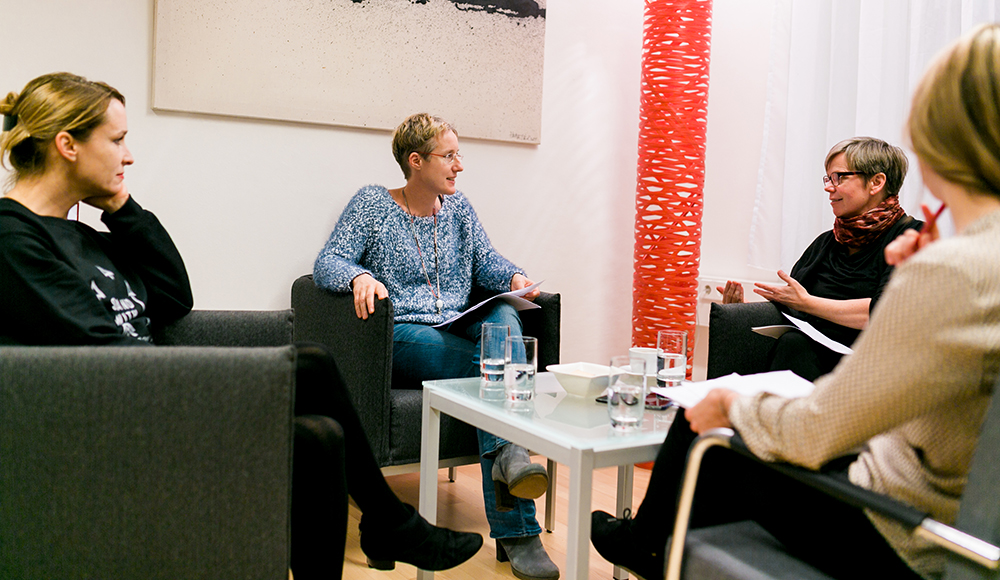
Art, in all its myriad forms, also has the potential to criticise social conditions and effect change. Is enough of this happening in Austria?
MU: I really do feel like I have the privilege of living in a very modern, very progressive country. Also in terms of art: there are a lot of interesting people who are active here. Austria’s a pretty advanced place, in this respect, quite visionary. And in film, Austrian directors are making an effort to put strong women’s roles on the screen.
SR: It could all be a bit more, though. I can’t say that I’ve seen a broad swath of the musical field taking on this topic artistically. But doing that without seeming to just complain is no easy thing, either.
Ms. Unger?
MU: In music, as far as I can see, experiments take place less in the establishment than in alternative and underground pop culture. Some music videos even get shot in people’s own homes. The girls there turn the usual roles on their heads, painting their bodies with feminist slogans and dancing aggressively. And hip hop, in particular, is an art form where lots of stuff is up for negotiation. But people could be making much more use of that latitude.
GM: I think that we have still more really good ways of breaking up traditional roles, departing from them and/or rethinking them in new and different ways. Like in terms of outfits. We’ve got a gender project running at the university right now where we deal with how female and male musicians appear onstage. In stage performance, the old roles are still dominant: women wear evening gowns, high heels, and gold in their hair. So we repeatedly have projects that dissolve these roles. And it’s just incredible: when you change the outfit and the setting, the way people think changes, too.
Because we get used to things and they seem normal to us after a while?
GM: Exactly. I think that one social policy mission of an arts university is to try things out and show people that there is an in-between, that there’s so much more—so a big priority for us is to encourage that. Students should be able to experiment with gender roles.
All this is happening in very special, elite circles, though. At the university, in the subcultures. So how can this kind of artistic approach to the topic be brought to the broader public? Feminist street art, for example, has already done so quite well, after all. How can this kind of thing succeed in other areas, as well?
MU: The thing that would make the strongest impression on the worldwide public would be if the orchestra playing the New Year’s Concert were to be staffed 50/50 by women and men.
SR: And if they’d programme a work by a contemporary woman composer—conducted by a woman.
MU: Yes. Statements like those really could help to get the ball rolling. But “feminism” is a tricky, loaded term outside of protected spaces filled with like-minded people—which is sad. And I’ve actually come to view the word as almost counterproductive, because it often elicits aggression.
Many view it as a militant term.
MU: The question here is whether militancy, in a world full of war, is really the proper tool. Or whether it’s not much more about togetherness, cooperation, communication. Women and men need to come together.
SR: It’s really about establishing things so that they go without saying. And I don’t know whether that need be combative all the time.
GM: The question is always one of objectives: Where to? It’s my deep conviction that we won’t achieve anything via militancy or force, because it just causes resistance to build up to the point where you fail to achieve your goal. For women to be able to rise to leadership positions or stand on the conductor’s podium, what’s much more necessary is that the system be committed to it. But of course, we’re also always talking about power and loss of power, here—which brings us back to the issue of combativeness. When women arrive in such positions, it entails that the men who were there before get pushed out. So it will always, in a certain way, have something to do with conflict—intense conflict.
MU: Though it should be said that there are also women who still feel quite comfortable with their old-fashioned roles.
Can such women still be brought on board? Need they be brought on board at all?
MU: It’s definitely not an easy thing, but perhaps it can work if the energy is so strong that the associated movement has a good, positive feel to it.
SR: There’s also nothing fundamentally wrong with feeling good in the role of a housewife and mother. That can also be fulfilling. So women who absolutely want that shouldn’t be criticised for wanting it.
GM: There’s definitely something to be said for withdrawal to a smaller, domestic sphere in this complex world of ours. But when couples in which the woman has never worked break up, many such women wake up to find themselves in a very rough spot—the risk of getting trapped in poverty is huge.
SR: Which brings us to an educational problem: girls are never really made aware of the things they’ll be facing and what their decisions will entail. Their schooling includes too little discussion of the roles that become relevant later on; there’s no gender studies, not even the slightest attempt to approach the topic.
GM: As a housewife, one enters into an unbelievable economic dependency. And I think that it should be ok to say this. It’s a decision every individual woman has to make—but the risks that it entails simply have to be clear to her. It’s interesting how it’s only in the rarest of cases that a man considers staying at home with his kids. So the economic independence that women can now enjoy is an important achievement, one that we have to protect.
MU: My training and university education were always my place of freedom and self-realisation. And during the years that I was on maternity leave, I noticed just how difficult it was for me not to have that space. I was always packing along my SLR camera in the baby carriage and doing street photography. I love my children, of course, but work is the constant that keeps me happy and sane. It’s an important aspect of my life as a woman.
GM: The fact is that career and family needn’t be mutually exclusive. And children benefit immensely from a mother who shapes her own life in a self-confident and self-determined way. My children respect and appreciate that.
Even so, there is a need for good childcare options.
GM: Absolutely—and making everything work is a managerial challenge.
SR: I’m in a privileged situation, in this respect, because I have a stay-at-home husband.
GM: Hey, a role model! It’s really important for men to help bear the weight of family life. Wouldn’t it be great if the men who did so would be more vocal and say: it’s good that we have an equal partnership, and it takes nothing away from me? Because the voices I hear all the time in the media say something else.
MU: There was a campaign called “I’m a feminist” that was participated in by figures like Canadian Prime Minister Justin Trudeau and even a few Austrian politicians and prominent personalities. So there are at least some feminist men out there.
We’ve already touched on how role models for young women are important. Where do efforts need to be aimed, here?
MU: One important thing is historiography: to talk about women who created works that changed society for the better, gave rise to peace, were important; some of these women worked for men, and that caused their stories to get lost.
GM: Generating visibility is certainly a crucial aspect. Women have—always!—helped to shape history. On 8 March, we’ll be introducing important women who have worked at our university—and to whom we’ll be dedicating a new room for seminars and other events. Each year, this space will bear a different one of these women’s names.
MU: My son is 14, and he’s totally into in this whole topic. Today, he showed me a list of the world’s ten most influential film directors—and it was a list of ten men. Countering that list with one that names the ten most important women directors of the present day would have an impact. It’s totally important that school students and university students have role models: names, works that they can google. The crucial thing is not simply to say, “We’re missing a woman, here,” but to also show what women there actually were and are.
Influential women are still few and far between, though. The first woman to receive an Academy Award for Best Director, for example, did so only in 2010—after 81 years’ worth of men.
MU: Right. That was Kathryn Bigelow, the ex-wife of Titanic and Avatar director James Cameron. She was the first woman to win a directing Oscar—for a movie about war, which is a very masculine theme. I know of no other woman who’s ever made such a movie. So we’re seeing this kind of liberation everywhere, and it ultimately enables people to believe that they can do it, too. Which is great.
GM: Self-confidence, daring to try is an essential point.
Do women dare too little?
GM: What’s important is that they have real-life examples to show them just what all is possible. I’m a single mother with two sons, and I’ve advanced to become Vice Rector of a university. Other female colleagues of mine have also managed that. We were visible. So we, as a society, have to manage to perceive woman and their abilities as what they actually are. And that can only succeed by creating that visibility. The directing profession, as Ms. Unger stated, is something we immediately associate with the top ten male directors. But if we succeed in altering such associations, we create a new reality—and then, a lot of things become easier.


Frauen – mdw-Magazin
Wednesday March 1st, 2017 at 10:33 AM
[…] Frauen sichtbar machen […]